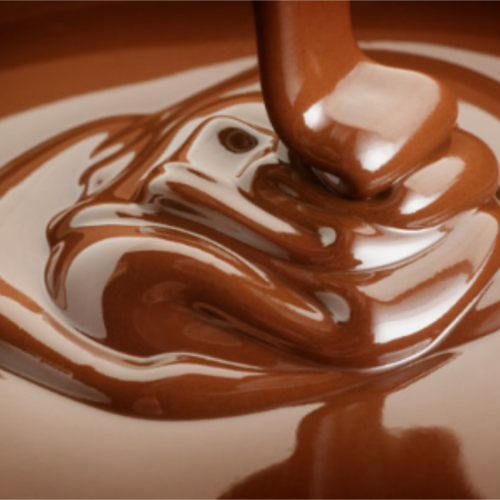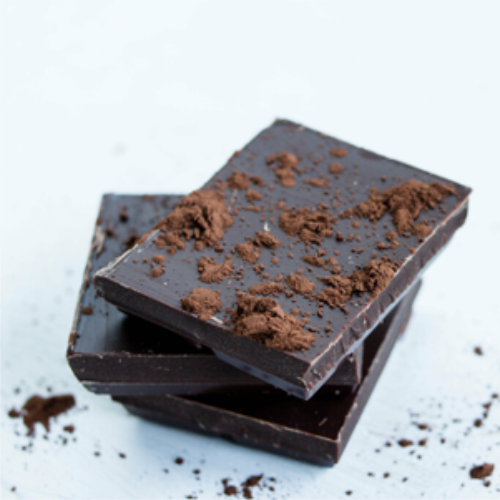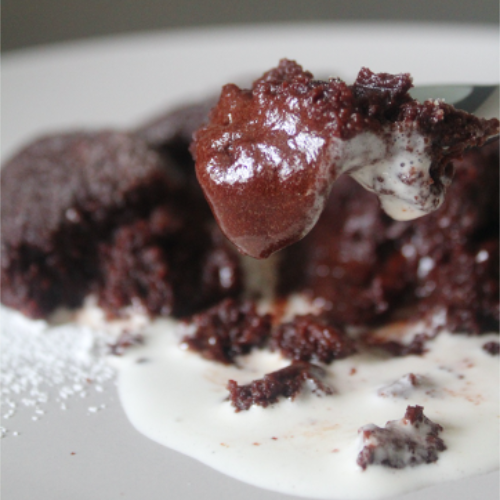Today is World Chocolate Day and I can’t think of a better way to celebrate that than by looking at the process of how our shop-bought chocolate bars are made and how they might benefit our health! We’ll also look at the differences between dark, milk and white chocolate and recommend some of our favourite chocolate recipes below!
The history of chocolate
Cocoa was initially discovered by the explorers, Columbus and Cortés. At the time, cocoa trees grew in the tropical rainforests of Honduras, Venezuela and Mexico. Today, cocoa is mainly grown in Asia, Africa & the Americas.
It takes each cocoa tree about 5 years in the unique equatorial forests to start producing cocoa. While the trees are covered in thousands of white and pink flowers, only about forty of those thousands will ever turn into cocoa pods. After six months of growing, the cocoa pods are ready to be harvested.
The cocoa beans are extracted from the pods and left to ferment to develop their flavour. The beans are then shipped to the chocolate processing manufacturers around the world.

How is chocolate made?
First, the beans are roasted then ground down into cocoa liquor. This can then be turned into cocoa butter, cocoa powder or used just as it is.
To create dark chocolate, you would add cocoa butter and sugar to the cocoa liquor. Depending on the quantity of the cocoa liquor, you get different percentages of dark chocolate. Normally this is around 50-90% cocoa solids.
For milk chocolate, you use less cocoa liquor, cocoa butter, sugar and milk – often milk powder. Normally 10-50% cocoa solids.
White chocolate actually contains no cocoa liquor, which is why it is so light, and just uses the cocoa butter, sugar and milk.
Interestingly, the new ruby chocolate is closer to white chocolate than dark. It contains very little cocoa liquor and the natural pink colouring of the ruby cocoa bean.
If you want to make your own chocolate at home, you could try different quantities of the above to create dark, milk or white chocolate. However, to create the smooth sensation of chocolate that we’re used to from shop-bought, you need special equipment to grind down the chocolate and remove any grittiness. The process takes many hours to create a smooth outcome but, I think you’ll agree, it is worth the wait!
What are the health benefits of dark chocolate?
Cocoa is rich in flavanols which are healthy for the heart. Dark chocolate contains up to 2-3 times more flavanols than milk chocolate. Flavanols can improve the production of Nitric Oxide that can help to improve blood circulation and, in turn, could lower blood pressure. Some studies even suggest that flavanols increase insulin sensitivity, potentially reducing the risk of diabetes.
There have been studies that help to highlight the benefits of a high cocoa or chocolate diet of 6g daily. This intake has been linked to a lower risk of heart disease and mortality. This could be because the dark chocolate decreases blood pressure and inflammation.
While dark chocolate is high in calories, there are also many benefits that could outweigh the negatives. In general, when eaten in moderation, it seems that dark chocolate could improve out health.
There have also been some initial studies that suggest dark chocolate might increase neuroplasticity, this is the brain’s ability to ‘reorganise itself, particularly in response to injury and disease.’ Dark chocolate might also improve brain function.
In terms of vitamins and mineral, dark chocolate is rich in:
- Iron
- Magnesium
- Zinc
- Antioxidants
- Copper
- Phosphorus

Styles of Chocolate and How to Taste Them:
The flavours of chocolate can differ depending on the origin of the cocoa bean, the processing methods, the environment in which the chocolate is produced, and the variety of the bean. To help you understand which type of chocolate to choose, here is a quick guide according to the Callebaut website:
- White Chocolate is usually described as: sweet, milky, buttery, vanilla, caramel, melting.
- Milk Chocolate: sweet, dairy, cocoa, creamy, melting.
- Dark Chocolate: sweet, sour, bitter, cocoa, roasted, fruity, creamy, melting.
- Ruby Chocolate: sourness, sweet, red berries.
Here are some other types of chocolate you might have heard about:
- Semisweet or bittersweet chocolates: contain a minimum of 35% cocoa solids and are used mainly in baking. Bittersweet chocolate usually contains less sugar than semisweet.
- Couverture chocolate: a high-quality chocolate with a high cocoa butter content that is tempered precisely. Couverture chocolate is most often used by chocolatiers for coating or molding – couverture means ‘covering’ in French.
- Raw chocolate is chocolate that has not been in anyway processed, heated or mixed with other ingredients. We sometimes see this in the form of raw cacao nibs.
- Modeling chocolate: this is a chocolate paste that is combined with a liquid sweetener, such as glucose, corn or golden syrup. It is most often used in baking and has the texture of fondant icing.
- Cocoa powder: This is the ground down cocoa solids where almost all the cocoa butter has been extracted.
- Broma process cocoa powder contains no additives.
- Dutch process cocoa powder is processed with alkali to neutralise cocoa’s natural acidity. Dutch process commonly destroys the natural flavonoids in cocoa.
If you want to enhance your chocolate tasting experience, Callebaut suggests thinking about these different criteria when eating chocolate:
- The look: colour and hue
- Touch: how quickly it melts in your hands; bend the chocolate to check for solidity
- Listen: How does it sound when you snap the bar?
- Smell: Snap the chocolate and the smell it – think of the fragrance you can smell; how intense it is.
- Taste: Pinch your nose, bite into the chocolate, let it melt in your mouth then release your nose and see what flavours you can taste.

Final Thoughts
Overall, dark chocolate in moderation appears to have some great health benefits. It is suggested that chocolate over 70% is consumed to achieve the best results. However, because chocolate manufacturers are not required to state how many flavanols their chocolate contains, we can’t be sure of the exact amount needed per bar for the benefits.
Regardless, it’s great to understand the process of making chocolate and how we might reap the benefits. The chocolate-making process is long and precise. There are scales of flavour from the darker, intense 70%+ chocolates, to the lighter white chocolates that actually contain no cocoa liquor at all!
I hope you enjoyed our guide to all things chocolate
Check out some of our favourite chocolate recipes, including our NEW Chocolate Fondant Recipe, Chocolate Chip Cookies, Chocolate Concrete, Chocolate-Covered Honeycomb and, of course, our Chocolate Babka!
All of our recipes are vegan and nut-free!
Until next time!
Soupologie xxx
